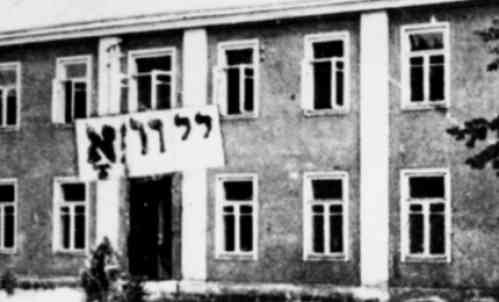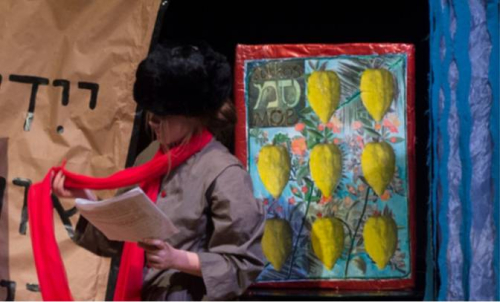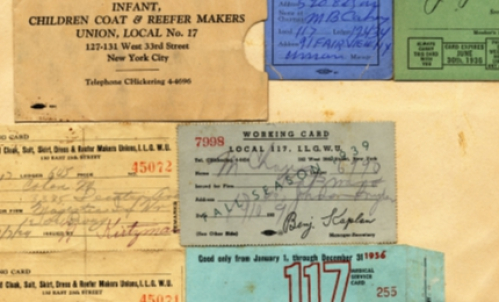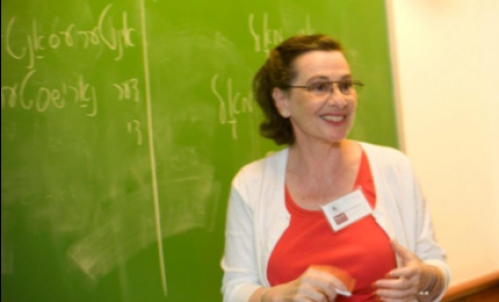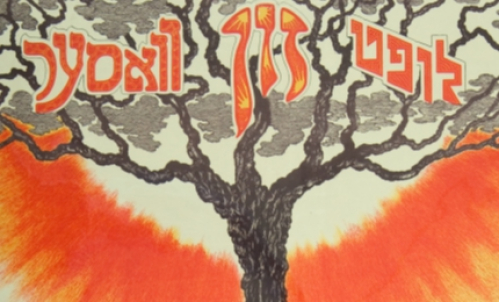2019 Winter Program
Course List · January 3 – 23, 2019
Vasily Grossman’s Life and Fate
Instructor: Jonathan Brent
The twin catastrophes of WWII and the Holocaust obsessed Vasily Grossman. In 1960, he submitted Life and Fate for publication, a novel that brought these themes together through the intertwined narratives of multiple individual lives. This is the great Soviet novel of military victory and human, moral catastrophe, joining the Jewish tragedy with the tragedy of Soviet reality.
Today, when so much discussion worldwide is given to the subject of the so-called “Double Genocide” theory, which is often seen as diminishing the uniqueness of the Holocaust by equating Soviet and Nazi crimes, Grossman’s Life and Fate dramatizes the need to understand the crimes of Hitler and those of Stalin as part of a single anti-human world that took shape in the middle of the twentieth century.
In 1960, Soviet Chief of Ideology Mikhail Suslov declared that this work could not be published for at least 200 hundred years, but we will read it with the intention of discussing the problems raised by associating these two great crimes of the twentieth century, and how it is possible to understand them together.
Vasily Grossman was born in Berdichev, Ukraine, in 1905, into an “emancipated” middle-class Jewish family and died in 1964. He studied mathematics and physics at Moscow State University and while working as an engineer began to write fiction and journalism. His first story, “The Town of Berdichev,” was published in 1934, and in 1941 Grossman became a frontline war correspondent for Krasnaya Zvezda (“The Red Star”). His wartime journalism, especially his accounts of the Battle of Stalingrad and the Battle of Kursk, brought him immediate recognition and fame throughout the USSR. He witnessed the liberation of Treblinka, Majdanek and other death camps, and with Ilya Ehrenburg wrote The Black Book of Russian Jewry, which was the first account of the Holocaust on Soviet soil.
The Shoah in Lithuania, 1941-1944: German Mass Crimes in War and Occupation
Instructor: Christoph Dieckmann
This course offers the opportunity to apply a broad approach for reconstructing and analyzing the Shoah in Lithuania. We will embed the persecution and murder of over 200,000 Jews in Lithuania between 1941 and 1944 into its contemporary context of German warfare and occupational policy.
We will deepen our understanding of the structures, processes and conditions of German Mass Crimes, because we will include in our questioning the murder of Soviet Prisoners of War (about 170,000), of forced evacuees of Soviet territories further East (about 40,000) and other victim groups (about 10,000), which happened at the same time in the same territory.
Looking at the history from several perspectives will enable us to analyze the power relations and choices of the German occupier and the occupied Lithuanians and Jews. With which choices were they confronted? Which choices did they make and what does that mean for our understanding of this murderous history?
Throughout the five sessions we will read and discuss crucial sources and methodological approaches. Integrating historiographical questions—with examples mostly from Germany, Lithuania and Israel—will be useful for our deliberations concerning the relations between history and memory, which lead again and again to heated debates about our dealing with this difficult past.
Love and Knishes: The Evolution of Jewish Food in America
Instructor: Darra Goldstein
The French critic Roland Barthes famously said that food is a system of communication. Through the complex religious and cultural rules of eating that have evolved over centuries, Jews have historically communicated identity through our choice of foods and the rituals surrounding them. This course will look at the Jewish experience in America through the prism of food, especially that of the great wave of Jews who arrived from Eastern Europe in the nineteenth century, and will consider the interplay between dietary laws and popular culture to understand how Jewish foods have been mainstreamed. We’ll focus on foods that are now iconic, exploring the rich histories behind such American Jewish deli classics as bagels and bialys, lox, kosher dills, knishes, pastrami, and rugelach. The course will be grounded in a wide range of texts including scholarly articles, a book on the history of the deli, and excerpts from cookbooks. We’ll also experience Jewish food firsthand through tastings from some of New York City’s finest purveyors.
The Twisted Scriveners of the Tribe: Just How “Jewish” is Cartooning?
Instructor: Ken Krimstein
Special Guests: Roz Chast, David Sipress, Peter Kuper, Mort Gerberg, Amy Kurzweil
What is it with Jews and cartoons? (And comics, comic books, caricatures, and graphic novels?) You have to admit, a whole lot of images have been engraved on a whole lot of printing plates over the years—from dashing inter-war caricatures by Leizer Kagan in Vilna to the daring political satires of Max Ginsberg in inter-war Kaunas to Al Hirschfield’s defining representations of “The Great White Way.” And let’s not forget Siegel and Schuster, two Jewish lads from Cleveland who transformed the Golem from a lump of clay into a tights-wearing man of steel (and a zillion dollar industry). Jewish-made jottings have graced The New Yorker since the 1920’s (at one point all three of the Rose cartoonist brothers were selling to the magazine), while William Steig and Syd Hoff brought Lower East Side patois to its illustrious pages. And then there was Maus, the memoir that defined a new genre of graphic novels – picture books with words that stand side-by-side the classics of Literature. Not to mention the usual gang of “idiots” (as they dubbed themselves) over at William Gaines’s Mad Magazine (Jaffe, Drucker, et al.), and its parent, E.C. Comics (Kurtzman, Krigstein, Feldstein etc.), who, according to psychiatrist, Dr. Frederick Wertheim’s Seduction of the Innocent, was a subversive and serious cause of juvenile delinquency.
“I am a writer who draws,” stated legendary cartoonist Saul Steinberg. This intensive course continues that mindset and will challenge you to to ponder deeply about thinking in ink and exploring why and how the prohibition on images spurred so many images. The course will cover and comprise: Reading. Questioning. Looking and exploring. There will even be drawing (no skill needed) as well as guest appearances from cartoonists and editors, depending on availability, such as S. Gross, Bob Mankoff, Drew Friedman, Ben Katchor, Ed Koren, Charles Kochman and who knows who else? In addition, Mr. Krimstein will share some trade secrets and let the class in on his own process as he develops his next project, a graphic novel of the recently discovered lost diaries of inter-war Jewish teens, rescued by the “The Book Smugglers” and uncovered recently in Vilnius, Lithuania.
You may laugh. You may cry but you’ll definitely gain an insight into how, and why this illustrative communication medium continues to grow and evolve. Together we’ll explore what exactly it is about the Yiddisher Kop (and hand) that has helped create what Art Spiegelman describes as “the art of turning time back into space.”
Jewish Stuff: Objects from the YIVO Archives
Instructor: Barbara Mann
What can we learn from the stuff we keep, and how do things help us remember? How do archival objects enrich and complicate the stories we tell about the past?
These questions will drive our discussions about a series of artifacts from YIVO’s rich collection of material culture. We will examine a range of archival items—from the small and the intimate, to the grand and the public. Participants will have a rare opportunity to encounter and handle objects from the last century or so, both precious and ordinary, including: ceremonial objects of religious observance, yizkor books, snuff boxes, kitchenware, wallets and clothing as well as hand-made art from Europe and the United States. Participants will thereby be encouraged to reflect on the meaning of objects in their own lives, and how material culture itself has evolved in the digital age. Readings will include historical documentation and background about the objects; critical texts on understanding material culture; and literary narratives that embed the meaning of the things we save within wider questions of memory, the home and Jewish identity.
Jewish American Short Stories
Instructor: Anita Norich
In this course we will seek to define and explore each of its titles four words. Why do we call these stories “Jewish?” What makes them “American?” What is a “short” story? What are the narrative strategies of the storytellers we read? In answering such questions, we trace the cultural and historical development of the American Jewish community over more than a century. Reading works by men and women, written in English and Yiddish, we will be concerned with such topics as immigration, acculturation, social and economic shifts, identity formation, the historical cataclysms and triumphs of the past 150 years. (All readings will be in English translation, although the Yiddish will be available for those who want it.) Readings will include one or more stories by Anzia Yezierska, Ab Cahan, Bernard Malamud, Philip Roth, Grace Paley, Delmore Schwartz, Isaac Bashevis Singer, Lamed Shapiro, and others.
Latin American Jewry: History and Culture
Instructor: Ilan Stavans
A journey through five centuries of Jewish life in the Americas, from the impact of the Spanish Inquisition and the crypto-Jewish diaspora that came along with the 1492 expulsion to the “shtetl” and Ottoman immigrations in the early 20th century, the struggle for social justice, the rise of anti-Semitism and “La Shoah,” the dilemmas of identity, the reaction to Israeli-Palestinian relations, religious awakening, global and state terrorism, and the survival of linguistic and cultural groups (Yiddish, Ladino, indigenous and immigrant languages). The course is a response to a broader investigation of Jewish history and culture that shamelessly ignores the Hispanic world in all its complexity. This unique, underappreciated civilization is essential to understanding the birth of the Haskalah or Jewish modernity and the very contemporary notion of the diaspora as well as the Sephardic-Ashkenazi divide. Likewise, it is nearsighted to look at the progression of Hispanic history and culture without appreciating the transformative role of Jews in it, from the age of Yehuda Halevi to Columbus, Jorge Isaac, Alberto Gerchunoff, Jacobo Timerman, Clarise Lispector, Moacyr Scliar, and others. The principal countries explored include Argentina, Mexico, Cuba, Venezuela, Chile, Peru, and Spain as the European “fountainhead.”
History, Memory, and Law
Instructor: Magda Teter
The emotions of pride and shame frequently weigh heavily on reckoning with historical past. While in the aftermath of traumatic events some communities turned to commissions of “truth and reconciliation,” in others the legal system became a forum for facing the past. This course will consider three examples of turning to law and courts to deal with historical past: France’s reckoning with the Vichy regime, the recent public trials in the US for racial crimes committed in the Civil Rights Era, and Poland’s turn to law and legislation while facing its Holocaust era past.
Secularism and the Religious Revival
Instructor: Michael Walzer
The point of this course will be to look for a plausible liberal/secularist response to religious zealotry. So this will not be objective social science or history. The course will discuss alternative views—of writers, for example, who are critical of secularism itself or who argue that the secularism Walzer defends isn't strong enough. The course will make an argument roughly along the lines of Walzer’s book, Paradox of Liberation: Secular Revolutions and Religious Counter-revolutions, which students will be reading. Walzer will enlarge on Paradox of Liberation’s arguments and respond to critics. Students will also read the most important critique of the book—by two Israeli philosophers: Avishai Margalit and Assaf Sharon.
Three Jewish Composers: Mahler, Schoenberg, and Bernstein
Instructor: Alex Weiser
Gustav Mahler (1860-1911), Arnold Schoenberg (1874-1951), and Leonard Bernstein (1918-1990) are three musical masters whose Jewish backgrounds shed light on their musical projects. Examining each composer’s work through the lens of their Jewish identity reveals divergent manifestations of Jewishness in music, and yet draws out meaningful threads that contribute to a broader story of Jewish history and culture: Mahler, a Jew from Bohemia working in Vienna looking to build a place for himself in the Austro-German musical tradition by expanding it with a universalist sensibility; Schoenberg, a Viennese Jew forced into exile, reexamining his personal and musical identity and reimagining what it means to be a Jewish composer; Bernstein freely drawing from his Jewish heritage within the context of a relatively accepting multicultural milieu in America. In this course we will contextualize these composers’ music through readings which shed light on the Jewish circumstances and inspirations surrounding their works, and we will apply these ideas to close listenings of selected works from each of these composer’s catalogs.
